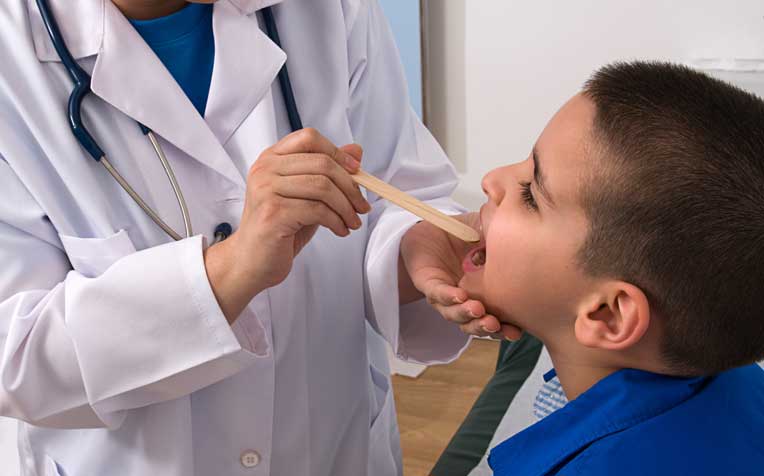
Tonsillitis in children is very common. It can be highly contagious and spreads easily in enclosed environments.
Tonsillitis can spread easily
It could be more than a simple sore throat if your child shows pain when swallowing, has a hoarse voice as well as a swollen face and neck. These are common symptoms of tonsillitis, or inflammation of the tonsils.
Tonsils - a pair of fleshy pads at the back of the throat - are the body’s first line of defence against germs and viruses entering through the nose and mouth.
Tonsils produce antibodies to fight infections. When the tonsils themselves become infected and inflamed by a serious infection, tonsillitis occurs.
Tonsillitis in children is very common. It can be highly contagious and spreads easily in closed environments such as day care centres, through airborne droplets and hand contact, say specialists at the Ear, Nose & Throat Centre (ENT) Centre, Singapore General Hospital (SGH), a member of the SingHealth group.
Besides tonsils, the adenoids - a cluster of grape-like tissues located above the tonsils at the back of the mouth - are also another wall of defence against infections. The tonsils and adenoids shrink in size as children reach puberty.
Common symptoms of tonsillitis in children:
- Painful swallowing
- Sore throat
- Fever and chills
- Headache
- Painful and swollen face/neck
- Red, swollen tonsils
- White patches on the tonsils
- Bad breath
Children with enlarged adenoids may show these symptoms:
- Difficulty breathing through the nose
- Noisy breathing
- Snoring
- Whining nasal voice
Pus or abscess may collect around the tonsils if bacterial tonsillitis is not treated properly. Obvious signs of complications: foul breath, swollen face and neck, and difficulties opening the mouth.
Treatment for enlarged adenoids and tonsillitis in children
Tonsillitis in children can be caused by a viral or bacterial infection.
Viral tonsillitis will usually clear up on its own. Paracetamol is prescribed if there is accompanying fever. Bacterial tonsillitis is treated with antibiotics.
Surgery to remove the tonsils (tonsillectomy) is recommended only if all other treatments fail and is likely for children who have great difficulty swallowing or breathing, say specialists at the ENT Centre, SGH.
Sometimes, adenoids are also surgically removed when they become so enlarged that they block the Eustachian tube and cause severe middle ear infections or nasal obstruction.
When enlarged tonsils and adenoids block nasal airways and cause sleep apnea, surgery is recommended to remove either the tonsils or adenoids, or both.
Tips on relieving pain for children with tonsillitis and enlarged adenoids
Enlarged adenoids and tonsillitis in children can be very painful and uncomfortable. Besides seeking medical care, try these home remedies:
- Get your child to gargle warm salt water a few times a day to relieve throat pain.
- Prepare clear soups, fruit juices, and honey-lemon water to soothe the throat (avoid hot liquids).
- Let your child suck on candy or lozenges. So the next time your child has a bad sore throat, watch out for symptoms of tonsillitis and enlarged adenoids.













 Get it on Google Play
Get it on Google Play